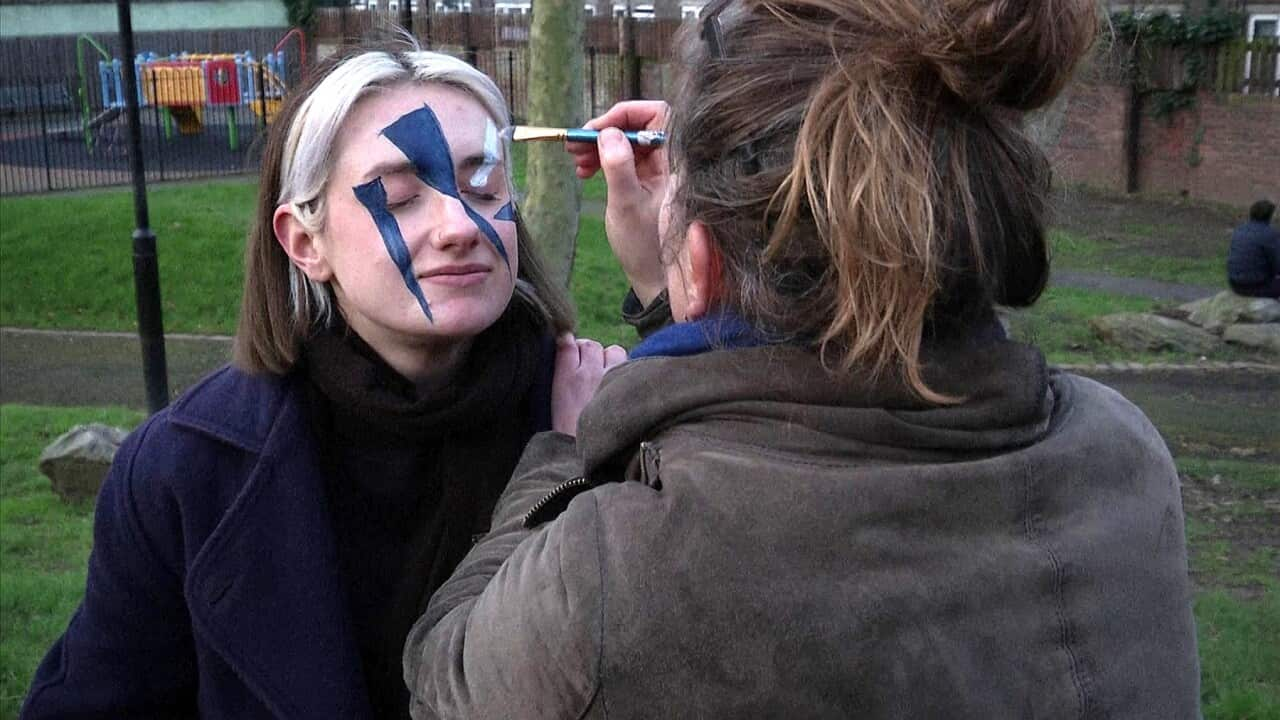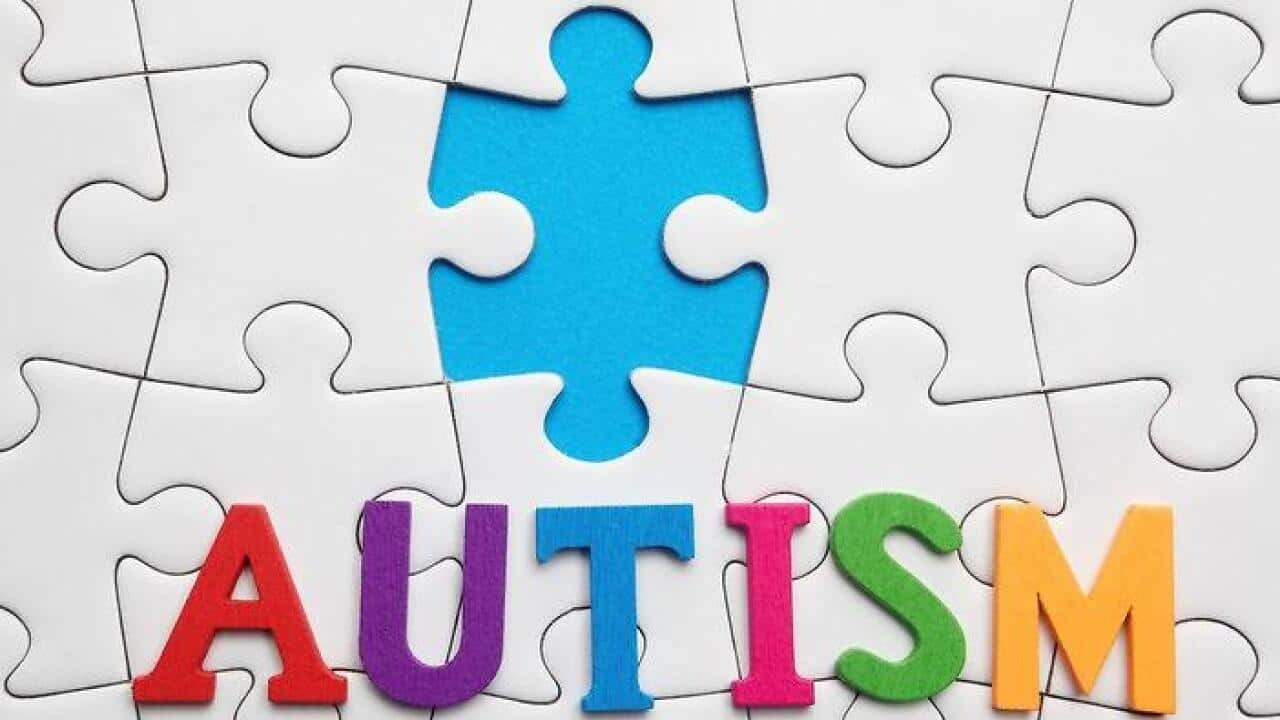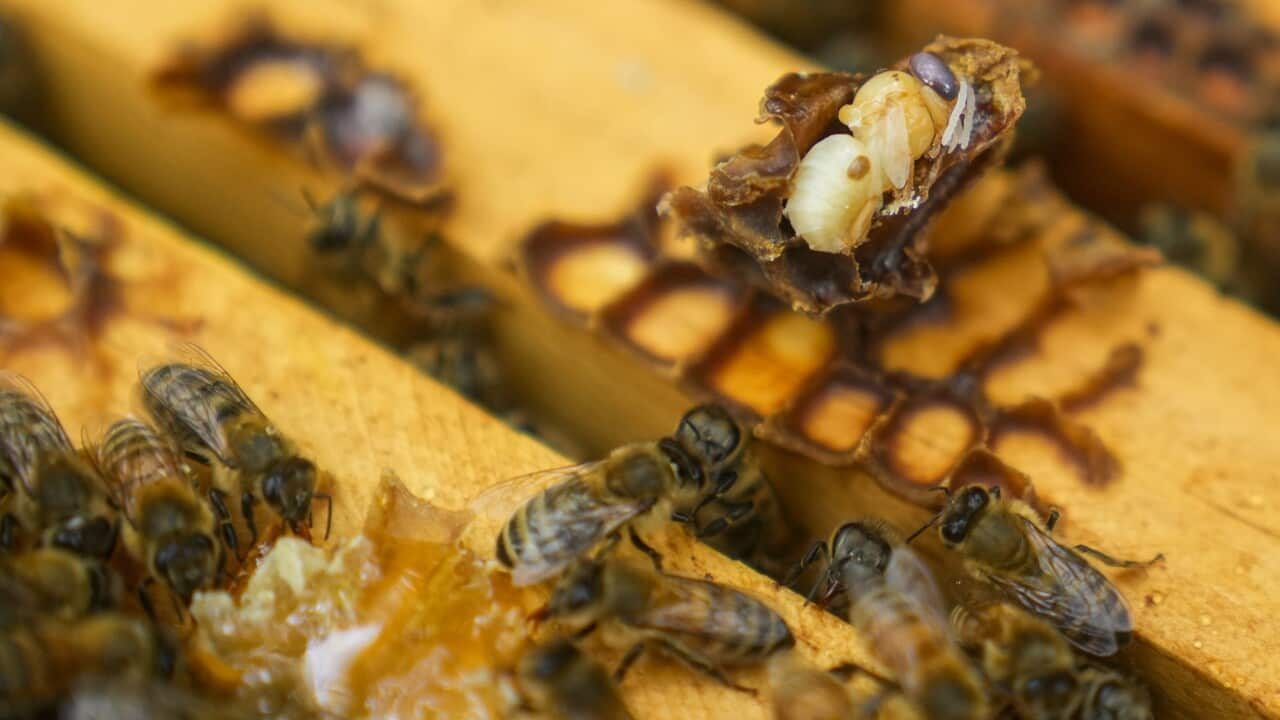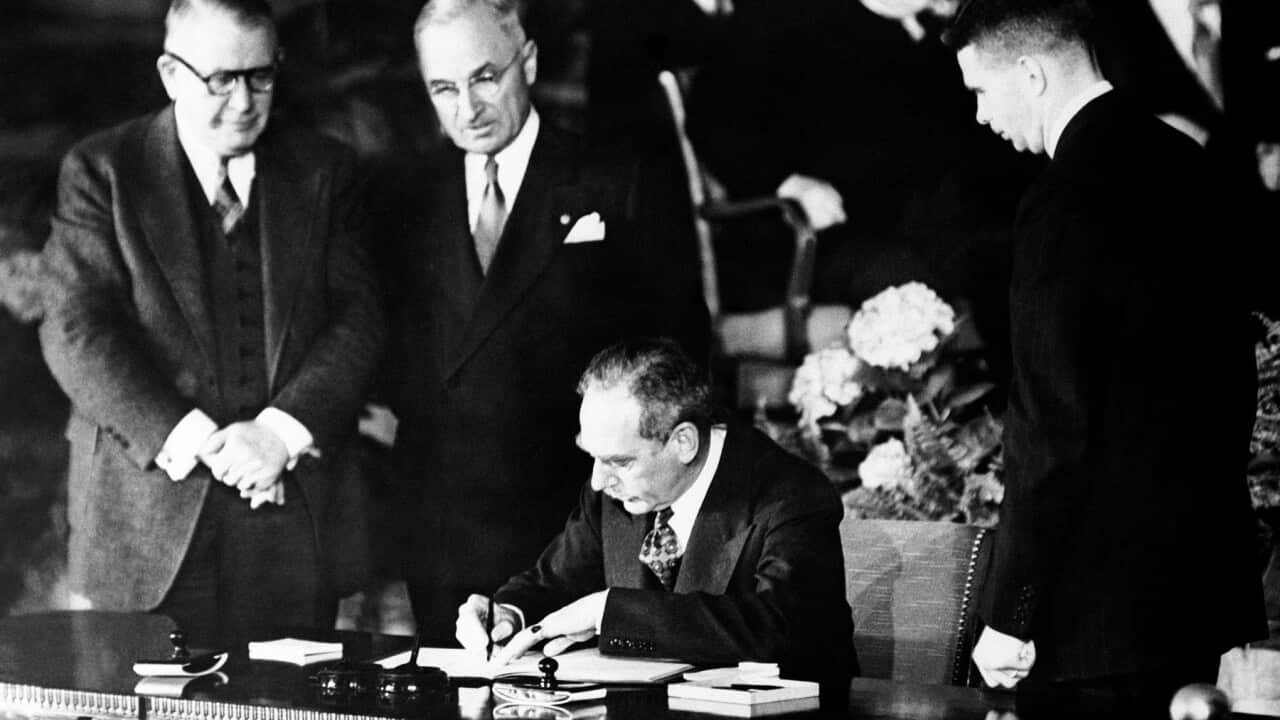Italian
Nel 2002, l'Australian Institute of Criminology ha reso noto che vi erano solo 33 sistemi di sorveglianza a circuito chiuso in tutta Australia - di solito allestiti in cooperazione tra la polizia e le autorità locali.
Oggi nessuno sa quante telecamere di sorveglianza operino in tutto il paese.
L'Australian Security Industry Association ritiene che potrebbero esserci fino a 60.000 telecamere che operano solo nella città di Sydney.
Ma quando si tratta di sorveglianza, la Gran Bretagna è molto più avanti rispetto all'Australia: con oltre quattro milioni di telecamere che operano in tutto il paese, il londinese medio può ritenere di essere fotografato fino a 300 volte al giorno.
L'artista Georgina Rowlands è membro fondatore del Dazzle Club:
"Everyone says, 'we're not worried about CCTV or facial recognition because we're innocent' and we're innocent until we do something and then these systems exist to kind of capture people. But I think that is a problem with the kind of passiveness of just accepting these systems and especially systems which are harvesting biometric data, which is so personal. And, you know, now your face can be used to access your entire records of your entire identity and history, I think that we need to understand what this technology is and we're just walking down the street, what can people see about us?"
Il Dazzle Club ha iniziato l'anno scorso a generare discussioni sul crescente utilizzo della tecnologia di riconoscimento facciale.
Il Commissario britannico per l'informazione ha sollevato il timore che il suo paese "sonnambuli verso una società di sorveglianza".
Il Dazzle Club è anche preoccupato per la mancanza di una legislazione che regoli la sorveglianza televisiva, la sua imprecisione e il modo in cui influisce sugli spazi pubblici.
Il club organizza passeggiate a Londra e, prima di partire, i membri dipingono i loro volti con forme geometriche apparentemente casuali.
Georgina Rowlands afferma che le forme confondono i sistemi di sorveglianza dei computer collegati alle telecamere TV, in modo che non riconoscano i volti.
"We always test to see if the CV Dazzle look works by using the cameras on our phones. So, most cameras will have a kind of simple facial recognition algorithm, you'll see like a square around your face. So, I can see that I'm hidden, it's not detecting me, so the shapes have worked."
La tecnologia di riconoscimento facciale funziona trasformando l'immagine di un volto in una formula matematica che può essere analizzata da algoritmi.
Questi algoritmi non funzionano se confrontati con i disegni cubisti del Dazzle Club.
Anna Hart, un altro membro fondatore del Dazzle Club, afferma che le loro passeggiate sono una combinazione fra un'installazione artistica e una protesta.
"The Dazzle Club is a collaboration between some artists that considers what the rampant surveillance of our public space is. And up until now, we've been making monthly silent walks. We apply CV Dazzle, then a different artist each month leads a kind of choreographed route through a particular piece of the city."
La settimana scorsa gli agenti di polizia britannici hanno arrestato una donna ricercata per aggressione dopo che le telecamere l'hanno identificata in una trafficata strada commerciale.
Sia in Gran Bretagna che in Australia, la polizia sostiene che sono necessarie nuove tecnologie per proteggere il pubblico e che le immagini di persone innocenti vengono immediatamente cancellate.
L'atteggiamento del pubblico nei confronti della tecnologia di riconoscimento facciale in Gran Bretagna sembra essere misto, secondo un sondaggio dell'anno scorso che ha scoperto che la maggior parte delle persone ha affermato di non saperne abbastanza, ma quasi la metà ha dichiarato che dovrebbe essere in grado di autoescludersi.
Anna Hart afferma che il face-painting consente di autoescludersi, utilizzando qualcosa che fa parte della vita da secoli.
"Makeup is something that civilizations have used for thousands of years. So, could it be that people begin to use it in a really individual way? People respond quite joyfully, they find it quite celebratory, us painting our face in this way, especially when there's many of us together. So, there's something about that kind of new forms of beauty and expression that might be a possibility. It's deeply ironic, you make yourself very visible to be invisible. So, we talk about hiding in plain sight."
English
A group of artists in London are painting their faces - not for aesthetic reasons, but to conceal their identities from closed-circuit TV cameras.
They're among many groups concerned at the growing use of facial recognition technology.
In 2002, the Australian Institute of Criminology reported there were just 33 CCTV surveillance systems across the whole of Australia - usually set up in a cooperative effort by police and local authorities.
Today, no-one knows how many surveillance cameras operate across the country.
The Australian Security Industry Association reckons there could be as many as 60,000 cameras operating just in the city of Sydney.
But when it comes to surveillance, Britain is a long way ahead of Australia: with more than four million TV cameras operating across the country, the average Londoner can reckon on being photographed up to 300 times a day.
Artist Georgina Rowlands is a founder member of The Dazzle Club:
"Everyone says, 'we're not worried about CCTV or facial recognition because we're innocent' and we're innocent until we do something and then these systems exist to kind of capture people. But I think that is a problem with the kind of passiveness of just accepting these systems and especially systems which are harvesting biometric data, which is so personal. And, you know, now your face can be used to access your entire records of your entire identity and history, I think that we need to understand what this technology is and we're just walking down the street, what can people see about us?"
The Dazzle Club started last year to provoke discussion about the growing using of facial recognition technology.
Britain's Information Commissioner has raised fears his country is "sleepwalking into a surveillance society".
The Dazzle Club is also concerned about lack of legislation to regulate TV surveillance, its inaccuracy and how it affects public spaces.
They organise walks in London - and before they set off, they paint their faces with seemingly random geometric shapes.
Georgina Rowlands says the shapes confuse the computer surveillance systems attached to the TV cameras so they don't recognise the faces.
"We always test to see if the CV Dazzle look works by using the cameras on our phones. So, most cameras will have a kind of simple facial recognition algorithm, you'll see like a square around your face. So, I can see that I'm hidden, it's not detecting me, so the shapes have worked."
Facial recognition technology works by turning an image of a face into a mathematical formula that can be analyzed by algorithms.
Those algorithms don't work when confronted by the cubist designs of the Dazzle club.
Anna Hart, another founder member of the Dazzle Club, says their walks are a combination of an art installation and a protest.
"The Dazzle Club is a collaboration between some artists that considers what the rampant surveillance of our public space is. And up until now, we've been making monthly silent walks. We apply CV Dazzle, then a different artist each month leads a kind of choreographed route through a particular piece of the city."
Last week British police officers arrested a woman wanted for assault after the cameras picked her out of a street crowd on a busy shopping street.
Police both in Britain and Australia say new technology is needed to keep the public safe and images of innocent people are deleted immediately.
Public attitudes to facial recognition technology in Britain appear to be mixed, according to one survey last year, which found most people said they don't know enough about it but nearly half said they should be able to opt out.
Anna Hart says their face-painting enables them to opt out - by using something that has been part of life for centuries.
"Makeup is something that civilizations have used for thousands of years. So, could it be that people begin to use it in a really individual way? People respond quite joyfully, they find it quite celebratory, us painting our face in this way, especially when there's many of us together. So, there's something about that kind of new forms of beauty and expression that might be a possibility. It's deeply ironic, you make yourself very visible to be invisible. So, we talk about hiding in plain sight."
Report by SBS





